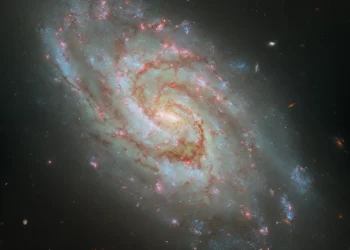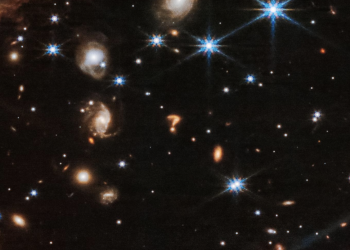The European Space Agency’s (ESA) Hera mission has just been launched aboard a SpaceX Falcon 9 rocket, marking a significant step forward in planetary defense. The spacecraft, now on its way to study a unique binary asteroid system, will gather critical data that could prove vital in protecting Earth from potential asteroid impacts.
Building on DART’s Impactful Success
Last year, NASA’s Double Asteroid Redirection Test (DART) made history by deliberately colliding with the asteroid Dimorphos, altering its orbit around a larger companion, Didymos. This marked the first human attempt at deflecting an asteroid, demonstrating that it is possible to shift a celestial object’s course using kinetic energy.
The Hera mission builds upon this success, with the goal of transforming the DART impact into a well-understood and repeatable planetary defense strategy. By visiting Dimorphos, Hera will gather essential data about the asteroid’s mass, structure, and composition, turning the theoretical concept of asteroid deflection into a proven technique.
Uncovering the Mysteries of a Binary Asteroid System
Binary asteroid systems, where two asteroids orbit one another, make up around 15% of all known asteroids, yet they remain largely unexplored. Hera is the first spacecraft to study such a system in detail. The Didymos system is particularly fascinating. Didymos, the larger asteroid, measures 780 meters in diameter, while its moonlet Dimorphos, at 150 meters, was the smallest asteroid ever visited by a spacecraft following the DART mission.
Hera’s detailed exploration of this system will provide unprecedented insights into how asteroids behave and interact, improving our understanding of these celestial bodies. This data could prove invaluable if a similar-sized asteroid were to threaten Earth in the future.
Technological Advancements and CubeSats
In addition to its planetary defense mission, Hera will carry out several technological firsts. Among them is the deployment of ESA’s first CubeSats — tiny, shoebox-sized spacecraft that will fly even closer to the asteroids than the main mission and may eventually land on their surface. Hera will also test advanced autonomous navigation systems, allowing the spacecraft to “self-drive” through space, guided by vision-based navigation.
The Importance of Asteroid Threat Awareness
While small asteroids frequently enter Earth’s atmosphere without consequence, larger asteroids, particularly those between 100 and 300 meters in size, pose a serious threat. A collision with one of these objects could have devastating effects, releasing energy equivalent to 50 megatons of TNT and potentially wiping out entire cities or triggering tsunamis.
Although large asteroids are well-monitored and unlikely to impact Earth in the near future, mid-sized asteroids remain a concern. With approximately 30,000 such objects near Earth, and 82% of them yet to be discovered, Hera’s mission is critical in ensuring we have the necessary data to respond to potential threats.
Hera’s Journey to the Asteroid
Hera’s launch marks the beginning of a two-year journey through space, with the spacecraft expected to reach the Didymos system in October 2026. By then, Hera will be almost 200 million kilometers away from Earth. Once it arrives, the mission will collect data that will not only refine our asteroid deflection strategies but also deepen our understanding of the Solar System’s ancient relics.
As Hera embarks on this historic mission, the knowledge it provides will help prepare us for potential future threats from space, safeguarding Earth for generations to come.











